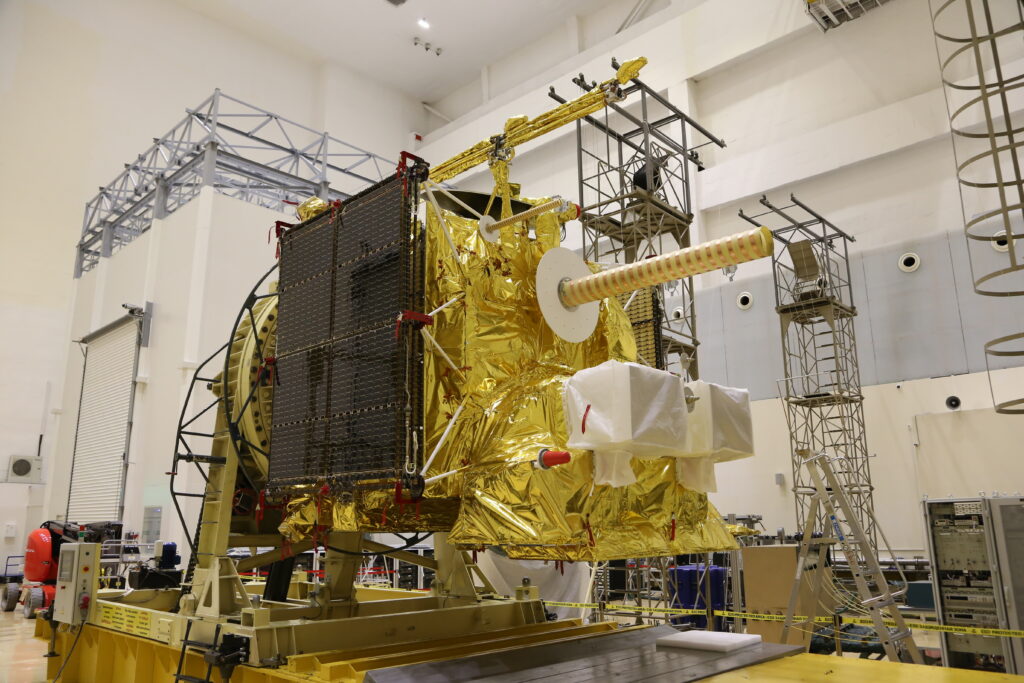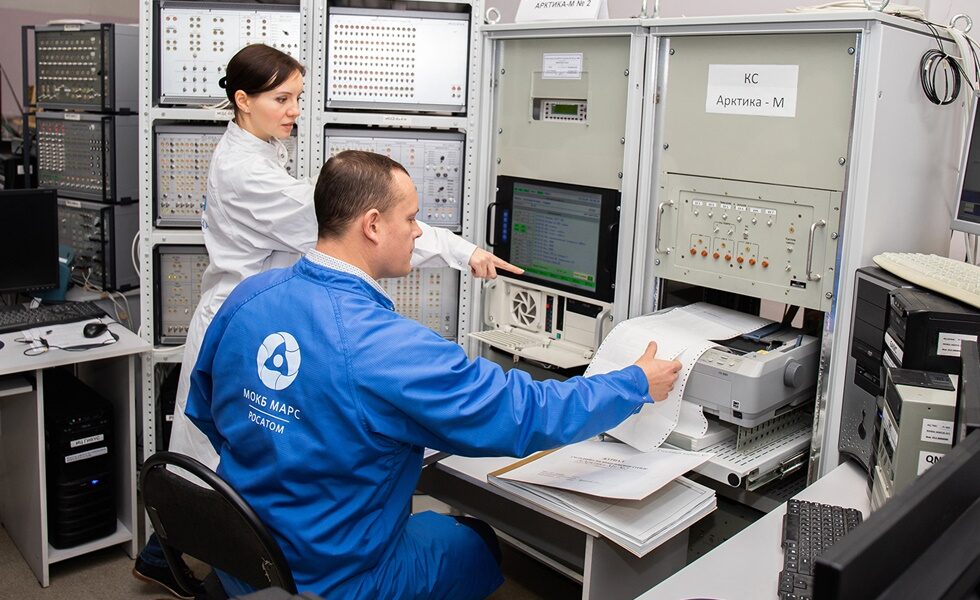Arktika-M No. 2 spacecraft equipped with an onboard control system developed by Mars Moscow Research and Design Office (a company of Rosatom) has been put into the satellite-specific operation. The decision was made by the State Commission for Flight Testing of Space Complexes for Social and Economic, Scientific, and Commercial Purposes following several months of flight testing of the new meteorological satellite designed to observe the Arctic region from a highly elliptical orbit (apogee ~40 thousand km), and of the upgraded Arktika-M space system.
The Mars’ onboard control system was designed to maintain the weather satellite operable under space radiation throughout its entire service life. The control system reads the current attitude of the spacecraft while maintaining the required one thus ensuring highly accurate and steady pointing of the target equipment to the Earth, fulfills a lot of service tasks, monitors and controls all onboard systems of the satellite. Arktika-M films the entire disc of the Earth both in the visible and infrared ranges at 15 minute-intervals.
Arktika-M No. 2 is the second spacecraft of the world’s only highly elliptical hydrometeorological space system Arktika-M. “In addition to its main tasks, there is a new fiber-optic gyroscopes based device undergoing flight qualification onboard the spacecraft, which is planned to be used onboard similar devices of the next generation,” commented Dmitry Dobrynin, Deputy General Designer at Mars – Chief Designer of onboard control systems.
According to Vladimir Panov, Rosatom Special Representative for the Arctic development, each satellite is very important for the development of the Arctic and Northern Sea Route: “With the commissioning of the second Arktika-M satellite, the first constellation for the Arctic continuous observation has been formed. The introduction of unique domestic innovative solutions, including the upgraded satellite systems intended for remote sensing and meteorology, ensures more quick update on the current situation for the users of the Northern Sea Route: possibility for more accurately assessing the Arctic ice conditions and environment, for predicting the same, and laying out the safest route.”

Reference
Mars Moscow Research and Design Office was founded in June 1955. In December 2017, by Edict of the President of the Russian Federation, Mars was taken over by Rosatom from the Federal Space Agency Roscosmos. The company mission includes the development and manufacture of onboard systems and control complexes, as well as separate devices, electronic units and test equipment for rocket, space and aviation products. Mars is a unique developer of control systems, running projects for both spacecraft and aircraft. For the diversification purposes, the company has been working on robotic systems for radiation therapy units since 2019. It’s another business is the development of a range of motors for rudder no-touch torque drives used in industrial robots, aircraft, as well as deep-sea and medical equipment. www.mokb-mars.ru.
As part of the federal space program, Mars is developing onboard control systems for four advanced spacecraft of the Arktika-M series (No. 3, 4, 5, 6) and Elektro-L No. 5 weather satellite. The information received from both Arktika-M highly elliptical satellites and geostationary Electro-L allows Roshydromet departments and other agencies to detail long-term and short-term weather forecasts making detection and monitoring of natural hazards and emergencies more efficient.
The highly elliptical hydrometeorological space system Arktika-M and spacecraft of the Arktika-M series were developed by Lavochkin Association, JSC (the Federal Space Agency Roscosmos) with the involvement of Mars (Rosatom) specialists. The Arktika-M No. 1 spacecraft, also equipped with the Mars-designed onboard control system, was placed into its final orbit in February 2021. The Arktika-M No. 2 spacecraft with Mars’ onboard system was launched on December 16, 2023.
Today, two Arktika-M spacecraft as part of the system monitor the surface and cloudiness of the Earth and seas in the Arctic region and adjacent areas, while ensuring constant exchange of meteorological information and transmission of signals about the position of ships and aircraft in distress to rescue services within Cospas-Sarsat international search and rescue system around the clock.





